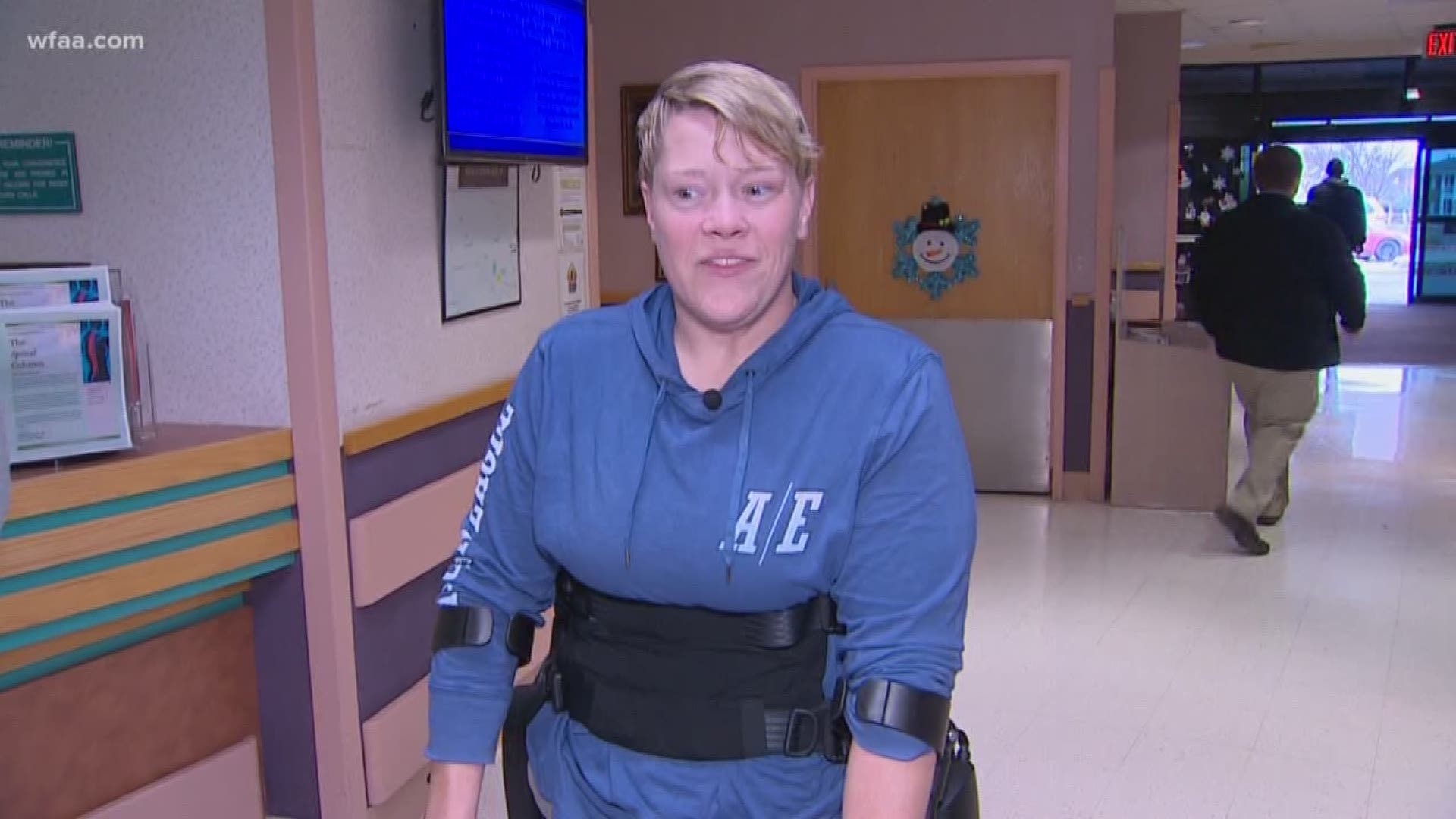DALLAS — Technology is helping make the impossible possible in many different aspects of our lives. For Heather Miner, technology is making her feel like her old self.
“Being in a wheelchair doesn’t make me feel disabled. I’m different, obviously, but this just gives you a different mindset,” she said.
Miner was in the Navy. Her job was to help aircraft on large carriers. In 2004, wind from a helicopter knocked her down. She lost partial use of her legs and arms in that accident. And about a decade later, she lost all use of her legs in a fall that caused a spinal injury.
The North Texas VA is one of 15 VA medical centers across the nation taking part in a research study that tracks the impact of using exoskeletal devices on paralyzed veterans.
The devices are robotic and fit snugly around a patients’ legs and torsos and help them walk with the use of crutches.
For the last year, researchers have collected data from Miner as she learned to walk in one of the devices called a Rewalk.
Dr. Bridget Bennett, chief of spinal cord injury at the North Texas VA, said researchers are tracking how the use of these devices can impact veterans’ quality of life areas like mental health, pain, bowel and bladder management.
In addition, researchers are looking at whether loss of bone density and muscle atrophy – two things that often occur in spinal cord injury patients – can be slowed or reversed when these patients begin to move around in the devices.
The data will help VA medical centers around the country determine who are the best candidates for the use of these exoskeletal devices, and how much training veterans need to successfully use them.
Lisa Jones, research coordinator, said the study has been rewarding.
“When they begin in the device, they’re all just white knuckling those crutches, like they’re all intimidated by it,” she said, “but after a few sessions, they seem really comfortable and then they want the next task.”
“We try to go through every scenario to make them comfortable with being able to go into the community or be in their home.”
Miner said she was terrified when she first began using the Rewalk, “but after a while it’s like, it’s part of you.”
“I enjoy the everyday things able-bodied people take from granted - like doing dishes or brushing my teeth or washing my hands and not getting drenched,” she said.
“Our goal is always - whether it’s with utilization of an exoskeletal device or utilization of a wheelchair - just to increase independence, increase participation in our community and that’s certainly what Heather’s been able to do,” Bennett said.
Miner was the first veteran to successfully complete the study in North Texas.
The North Texas VA was able to help her obtain her very own Rewalk device for personal use at home. She had her final fitting on Wednesday.
The researchers who worked with her during the study were almost as excited as she was. “Things that were a doubt or a limitation, or a denial, 30 years ago or even two years ago is now a possibility,” said Rewalk trainer Kimiko Williams.
Miner said she’s most excited to be able to see people at eye level. “Not having people look down on you, being able to see people at eye level – feeling equal, not inferior,” she said.
She’s never been inferior. She’s a veteran – a fighter. And now she’s walking tall once again.

